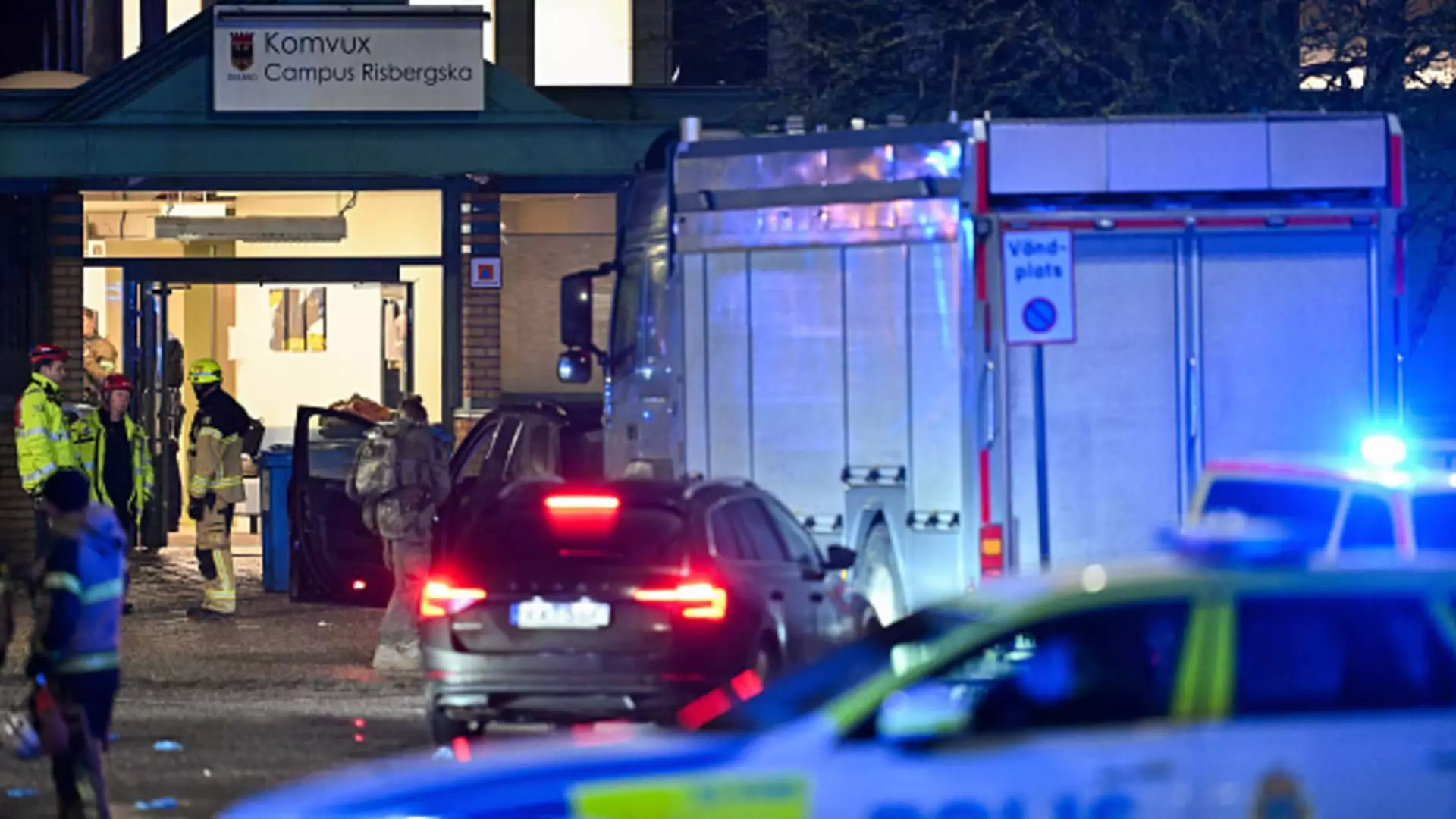On a day that will forever resonate in the collective memory of Sweden, a tragic event unfolded at an adult education center in Orebro, claiming the lives of ten individuals. This catastrophic incident marks a significant moment not merely in Swedish history, but strikes at the very core of societal safety and community trust. Prime Minister Ulf Kristersson identified this day as one of profound sorrow, encapsulating the sense of loss that rippled through the nation.
According to the Swedish police, the shooter, who is believed to have perished in the attack, escalated the crisis without apparent motive. The horrific act took place at the Risbergska school, tailored for adults seeking to complete their education. Located in proximity to other educational institutions, the shooting revealed vulnerabilities across multiple levels of education and safety. The local police chief, Roberto Eid Forest, provided updates during a press conference but faced the grim reality of navigating a vast crime scene, saying, “We have a big crime scene; we have to complete the searches we are conducting in the school.”
Despite earlier speculation, investigations suggested that the gunman acted alone, and for now, the authorities ruled out any motives linked to terrorism. Nonetheless, the uncertainty surrounding the background of the gunman, who had no previous ties to law enforcement, only deepens the tragedy and leaves the community grappling with unexpected grief.
The responses from Swedish leadership have been laden with sorrow and disbelief. Prime Minister Kristersson characterized the shooting as the worst in Sweden’s history and described a “darkness” casting a shadow over the nation. Following his sentiments, King Carl XVI Gustaf also expressed profound grief, stating, “It is with deep sadness and dismay that my family and I received the news about this terrible atrocity.”
International figures such as European Commission President Ursula von der Leyen expressed their solidarity, affirming that the continent stands with Sweden during these disheartening times. These messages of support might serve as a reminder of the interconnectedness shared across nations, particularly in moments of collective tragedy.
Witnesses at the scene described the chaos as it unfolded. Maria Pegado, a teacher caught in the terrifying scenario, recounted how a sudden intrusion into her classroom prompted her to evacuate her students. “I heard two shots, but we made it out,” she recalled, underlining the instinctive human capacity for survival amid overwhelming panic. Her story, while deeply personal, resonates with a broader narrative of fear and resilience in the face of violence.
This incident unearths unsettling questions about safety in educational settings. With a rising number of adult education students being immigrants—many seeking to build a new life—this act of violence raises alarms regarding their security and mental well-being in a country known for its progressive values.
While Sweden is often regarded as a paragon of safety and social welfare, it has faced a troubling rise in gun violence linked to organized crime and gang activities. The surge in lethal incidents indicates a deeper societal issue that transcends individual tragedies and points towards systemic failures in addressing root causes, including socio-economic disparities and integration challenges. Previous cases, including a heinous attack in 2015, serve as stark reminders of how violence has infiltrated spaces once considered safe.
Despite stringent gun laws, Sweden’s high rate of legal gun ownership, which is primarily associated with hunting, has not alleviated the pressures stemming from illegal firearms within criminal networks. This paradox highlights the need for comprehensive strategies to address both legal regulations and preventive measures against illegal possession and use.
As Sweden reels from this senseless and grievous act, it stands at a crossroads. This incident should catalyze broader discussions about gun control, community safety, and the responsibility shared by society to protect its most vulnerable members. While words of comfort can provide some solace, they can hardly replace the need for actionable plans that prevent future tragedies.
The call for unity in the wake of this disaster is paramount. As leaders and citizens alike reflect on the day’s events, there is hope that the pain felt across Sweden will motivate a movement toward reform—a transformation that not only honors those lost but also fosters a safer future for all citizens.


Leave a Reply